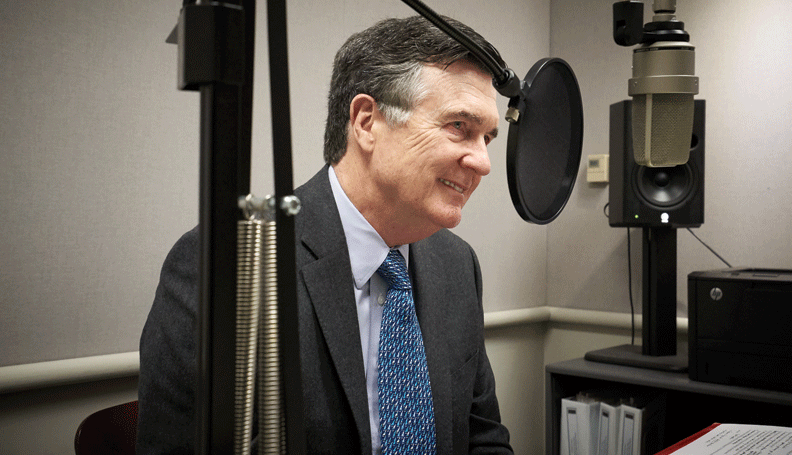Tariffs Cloud the Outlook, Fed in 'Wait-and-See' Mode, Says Former Fed President Lockhart

Sign up for Global Macro Playbook: Stay ahead of the curve on global macro trends.
Uncertainty surrounding President Donald Trump's volatile trade policies has thrown a wrench into the Federal Reserve's plans, forcing the central bank into a "wait-and-see" mode, according to former Atlanta Fed President Dennis Lockhart. With the economic outlook clouded by the threat of escalating tariffs, the Fed is hesitant to commit to a clear path on interest rates.
"It's early in the year. The Fed is in a wait-and-see mode. They really don't want to indicate clearly with their direction because there's not enough clarity at the moment," Lockhart said in a recent CNBC interview. He added that Fed Chair Jerome Powell will likely keep his "cards close to his vest" at the upcoming FOMC meeting.
This cautious stance comes as the Fed grapples with conflicting economic signals. While recent data showed inflation easing slightly in February, consumer sentiment has plummeted, and businesses are expressing growing concerns about the impact of tariffs. The University of Michigan's consumer sentiment index fell to its lowest level since November 2022, with respondents citing "high level of uncertainty around policy."
The threat of a protracted trade war, as Lockhart put it, is a major factor driving the Fed's hesitancy. The on-again, off-again nature of Trump's tariff announcements, including levies on goods from China, Canada, and Mexico, has created significant uncertainty for businesses and consumers alike.
"The promise of future tariffs essentially pushes aside [the Fed’s] goal of data dependency and means they’re going to have to rely more on a forecast framework," said Joe Brusuelas, chief economist at tax and consulting firm RSM US, to The Financial Times.
This uncertainty is already impacting the economy. Major U.S. airlines, including American, Delta, and Southwest, have warned of a slowdown in demand, citing consumer concerns about the economic outlook. The stock market has also experienced significant volatility, with the S&P 500 briefly entering correction territory last week.
The Fed now faces a dilemma. Cutting interest rates could help cushion the economy from a potential slowdown, but it could also risk fueling inflation if tariffs lead to higher prices. "The Fed is in a bind as it will have to balance the risks of a slowing economy and consumer against the possibility that sizable tariffs could stoke another round of inflation in the months ahead," said Scott Anderson, chief U.S. economist at BMO Capital Markets, to Reuters.
Lockhart suggested two possible scenarios that could lead to rate cuts: a "bad news" scenario where unemployment rises significantly, forcing the Fed to act to protect its employment mandate, or a "good news" scenario where the economy continues to grow and disinflation resumes. However, he acknowledged that the "good news" scenario seems "less and less likely at the moment because of the tariff threat."
Meanwhile, safe-haven assets like gold are soaring, hitting a record high on Wednesday, as investors seek protection from economic and geopolitical risks.
The central bank is expected to keep rates steady during this week, and Lockhart anticipates them to remain non-committal. "I think there's still room for two cuts this year, but if those cuts come, I would see them in the second half as much more has become clear," he stated.